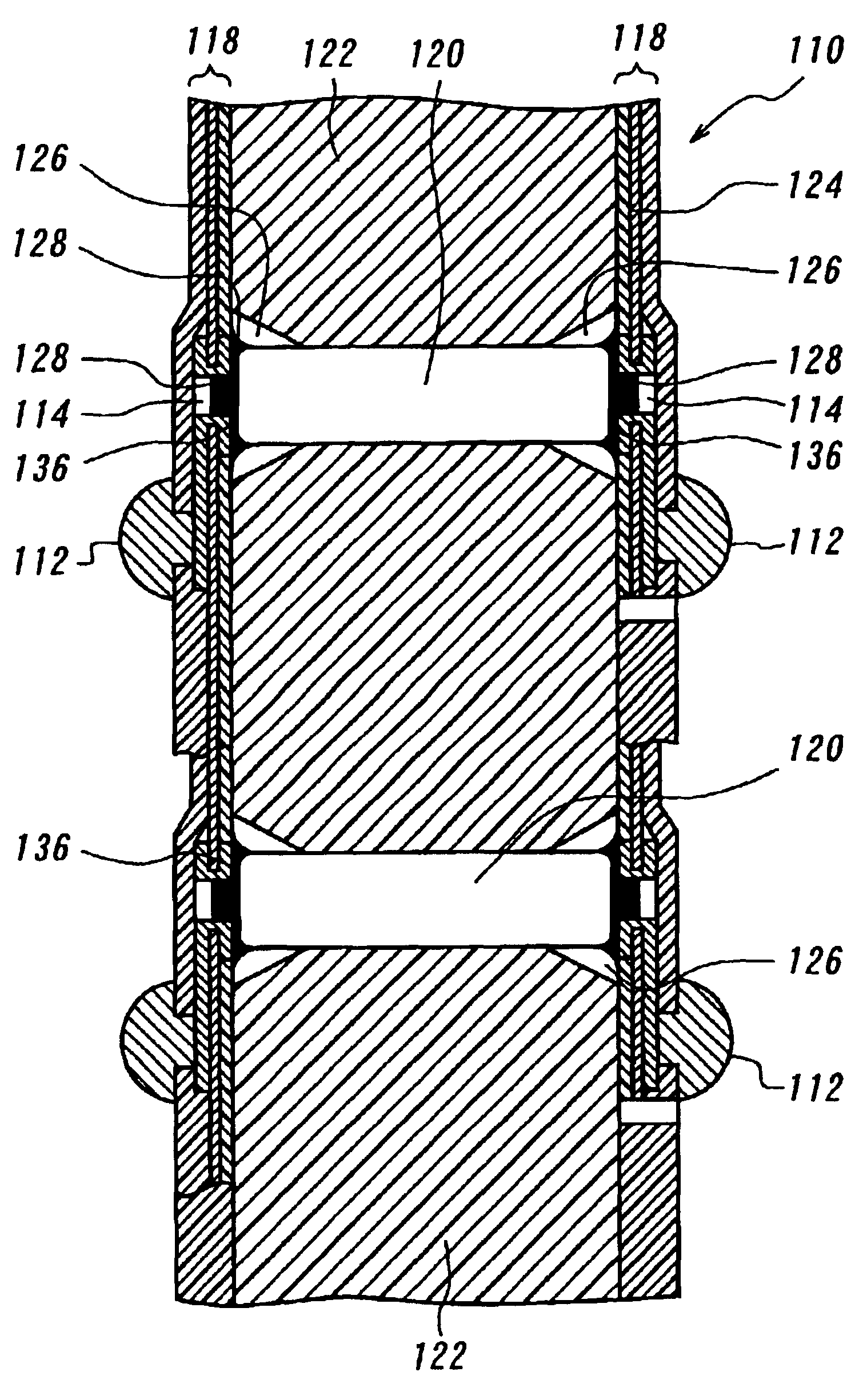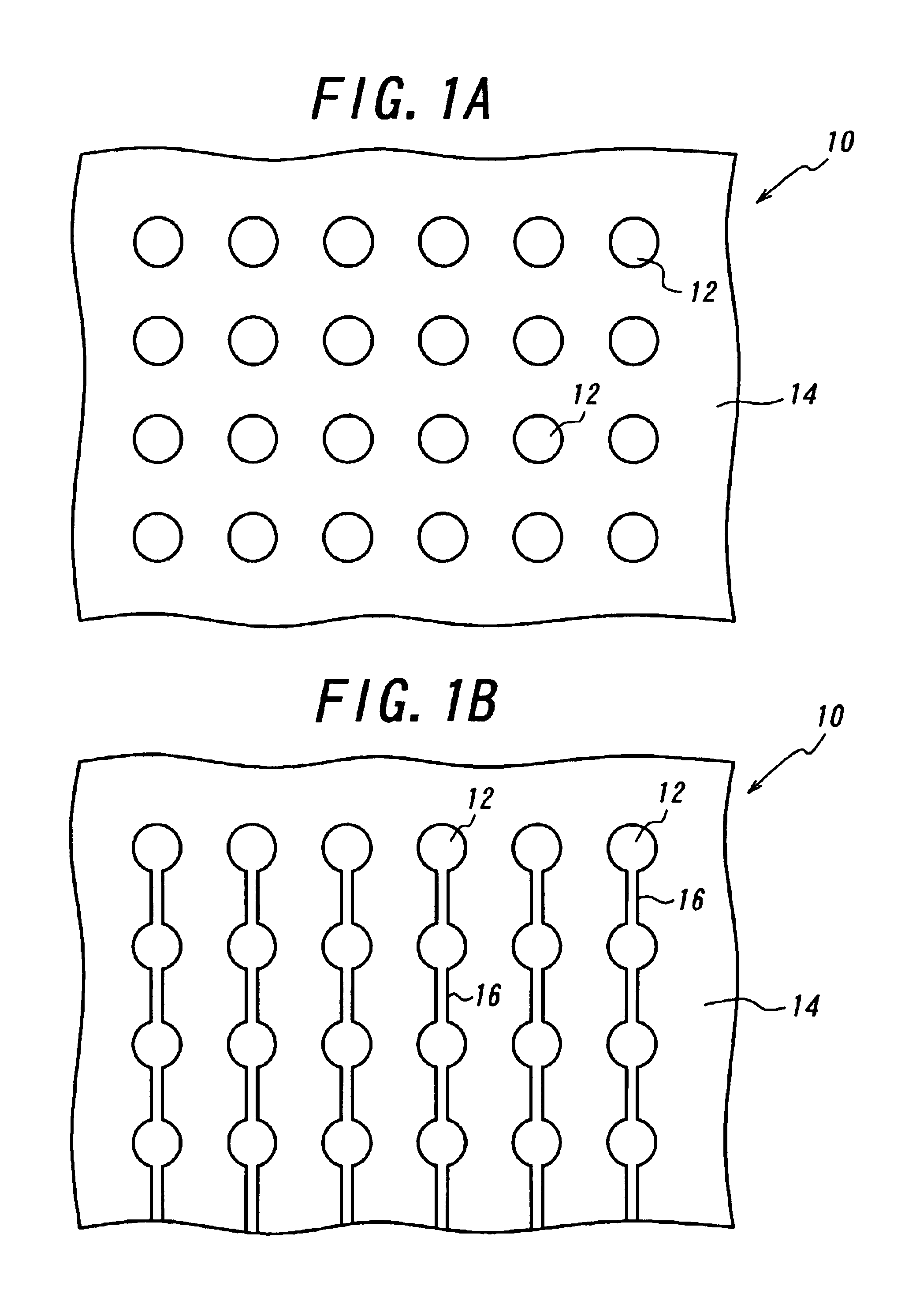Electrical connector
- Summary
- Abstract
- Description
- Claims
- Application Information
AI Technical Summary
Benefits of technology
Problems solved by technology
Method used
Image
Examples
Embodiment Construction
Shown in FIG. 1A is an electrical connector 10 provided with only a plurality of electric contacts 12 on a flexible printed circuit board 14 by way of example. In order to carry out the surface treatment of the electric contacts 12, the electroless plating is preferable for this purpose because power supply lead wires are not required. In practice, however, the electroless plating could not be carried out in this case due to problems such as longer process time and peeling of copper foils as described previously. Consequently, the electrolytic plating must be carried out even if there is a need for electrical connections between the electric contacts 12 as by power supply lead wires 16.
After the electrolytic surface treatment, however, it is required to cut off the electrical connections in order to render the respective electric contacts electrically independent of one another. The electrical connections can be cut off by forming apertures 18, rectangular slits 22 or U-shaped slits...
PUM
 Login to View More
Login to View More Abstract
Description
Claims
Application Information
 Login to View More
Login to View More - R&D
- Intellectual Property
- Life Sciences
- Materials
- Tech Scout
- Unparalleled Data Quality
- Higher Quality Content
- 60% Fewer Hallucinations
Browse by: Latest US Patents, China's latest patents, Technical Efficacy Thesaurus, Application Domain, Technology Topic, Popular Technical Reports.
© 2025 PatSnap. All rights reserved.Legal|Privacy policy|Modern Slavery Act Transparency Statement|Sitemap|About US| Contact US: help@patsnap.com



